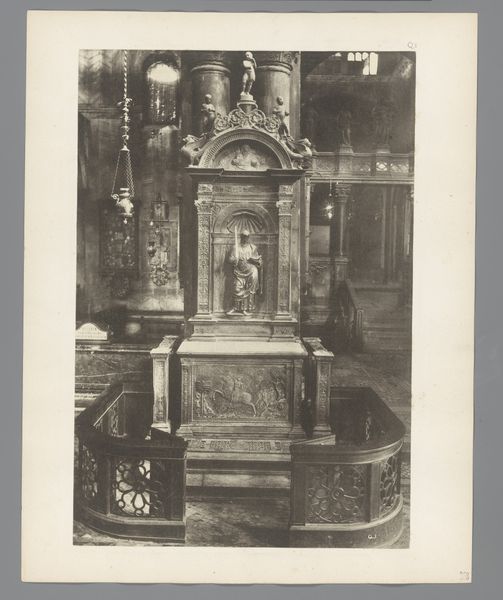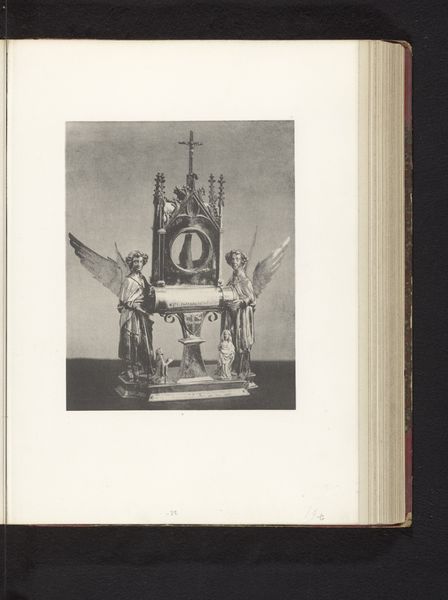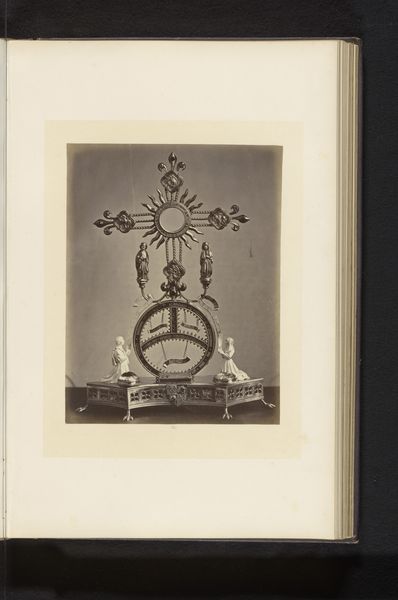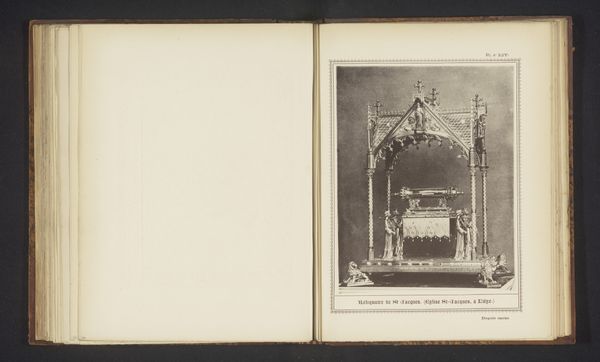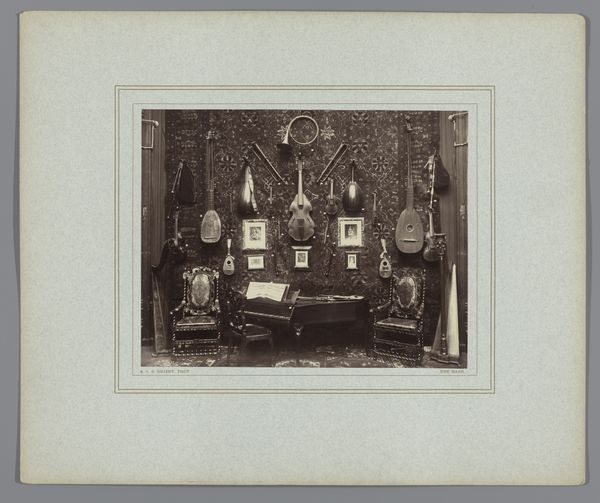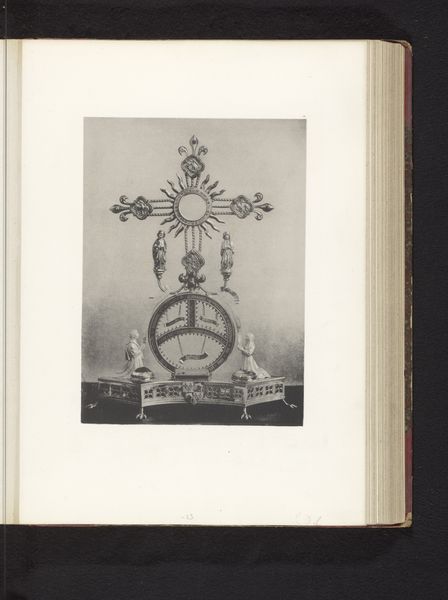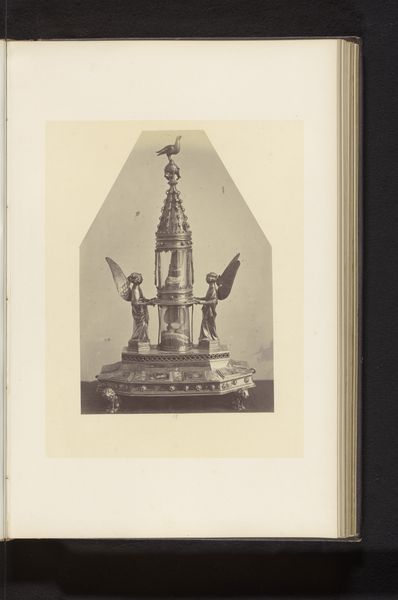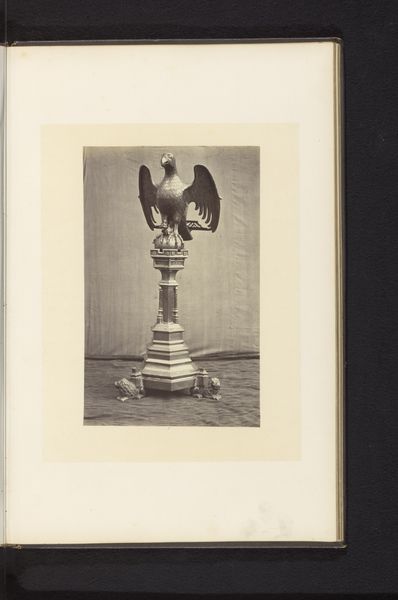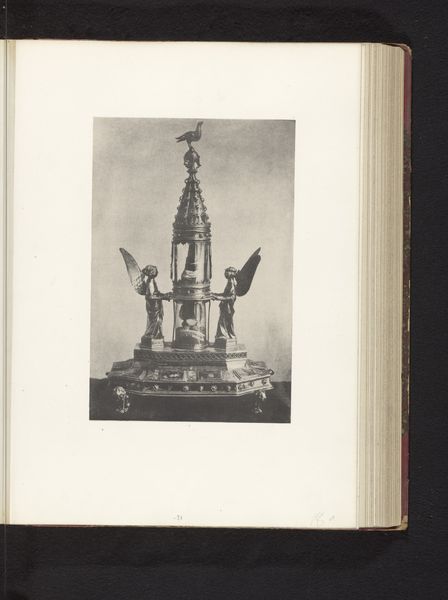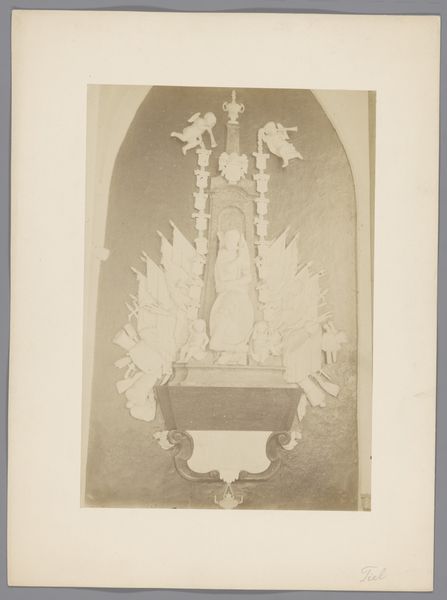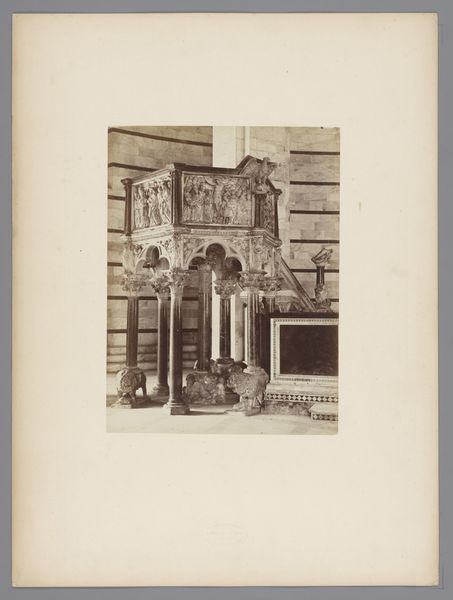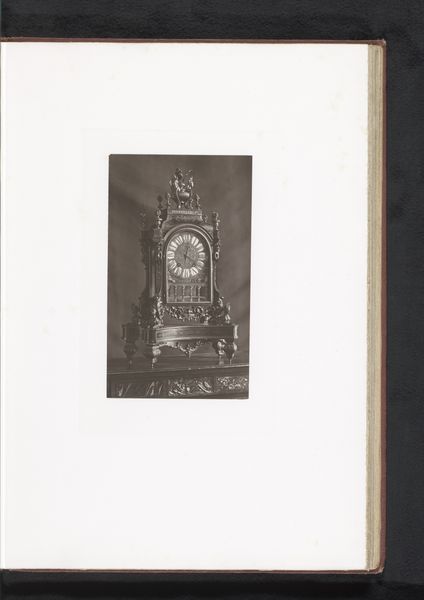
Monstrans uit de Sint-Waltrudiskerk in Mons, opgesteld op een tentoonstelling over religieuze objecten uit de middeleeuwen en renaissance in 1864 in Mechelen 1864
0:00
0:00
Dimensions: height 249 mm, width 208 mm
Copyright: Rijks Museum: Open Domain
Curator: This striking gelatin-silver print, created in 1864 by Joseph Maes, captures a monstrance from the Saint Waltrudis Church in Mons. It was displayed in an exhibition of religious objects in Mechelen. Editor: My initial reaction is one of muted grandeur. The monochromatic palette emphasizes the sculpture's textures and intricate details, but it also feels like a relic, detached from its original context. Curator: Indeed. It’s a photograph OF a religious object displayed in an exhibition ABOUT religious objects. The piece, crafted from bronze and other metals, blends medieval and Gothic art movements. Editor: From a purely aesthetic perspective, the symmetry is compelling – the flanking angels with outstretched wings, the vertical thrust of the central structure, the stillness... yet the photograph itself flattens the experience, turning a three-dimensional object into a set of compositional arrangements and gray tones. Curator: Consider the monstrance's purpose. It held the consecrated Eucharistic host, the body of Christ, and would have been a central focal point during religious ceremonies. Showing it like this alters it from its original purpose, more for historical study and preservation of memory. Editor: And it does so, very effectively. By being stripped of the color, context and scale, a semiotic shift occurs where now the object functions as an archival totem to an otherwise inaccessible past. Curator: What’s remarkable is how photography, a relatively new medium then, was already being used to document and disseminate information about historical artifacts. Editor: The political dimension is quite tangible; to present a Medieval Catholic object in mid 19th-century speaks volumes about institutional memory, and potentially signals to ideas around restoration, and reclamation during a tumultuous period of upheaval. Curator: Absolutely. The act of exhibiting it transforms the sacred object into a cultural artifact. Thank you for this enriching reading of the image. Editor: And thank you for the art-historical grounding, this piece truly benefits from interdisciplinary discussion.
Comments
No comments
Be the first to comment and join the conversation on the ultimate creative platform.

